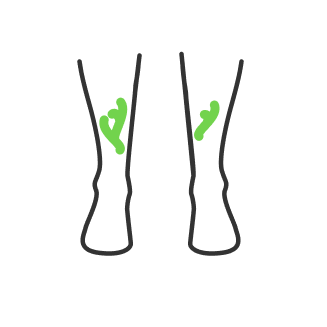What is depth of field in photography

- Factors That Affect DOF in Photography
- Examples of DOF in Photography
- Portrait Shots with Shallow DOF
- Landscape Shots with Wide DOF
- Examples from Professional Photographers
- What controls the depth of field in photography
- Using DOF to Create Aesthetic Images
- Tips for Using Depth of Field
- How Depth of Field Can Affect a Photograph
- Understanding Aperture and Focal Length
- About Finding the Right Focus Distance
- Practicing to Master DOF in Your Photography
How can one define depth of field in photography? It is not something overcomplicated and has been studied for years. Depth of field (DOF) is an essential concept in photography and refers to how much of a scene appears sharp and focused in the final image. Put simply, it is the distance between the nearest and farthest objects that appear in focus. This means that if you want to emphasize a particular subject within your photo, you can use DOF to ensure that your subject is sharp and stands out from the rest of the image.
Understanding aperture and depth of field can be a tedious task. Thus, we broke it down for you. The depth of field in an image is determined by three factors: the camera's aperture, focal length, and focus distance. Aperture refers to how wide or narrow the opening of a camera’s lens is. The wider it is, the less the depth of field. Focal length refers to how zoomed-in a lens is; the more zoomed in, the shallower the depth of field. The focus distance is how far away your subject is from your camera; the closer it is, the less DOF.
Examples of depth of field in photography include portrait shots that have a shallow depth of field, with the subject in sharp focus and the background blurred. Another example is landscape shots with a wide DOF, where the entire scene appears sharp.
In summary, depth of field is an important concept in photography and refers to how much of a scene appears sharply focused.
Factors That Affect DOF in Photography

Depth of field (DOF) is an important concept in photography that affects the sharpness and clarity of a scene. Aperture refers to how wide or narrow the opening of a camera’s lens is. Generally speaking, the wider the aperture, the shallower the depth of field, and the narrower the aperture. It creates an effect of deep depth of field in photography.
The focal length refers to how zoomed in a lens is. A longer focal length creates a shallow DOF while a shorter one will create a wider depth of field.
Finally, focus distance determines how far away your subject is from the camera. The closer it is, the less DOF there will be in the image.
Mastering depth of field can help you create aesthetically pleasing photos that draw attention to your subject. Understanding how these factors affect DOF is key for taking stunning images with the desired amount of sharpness and blur. By practicing with different combinations of aperture, focal length, and focus distance, you can become a true professional at creating images with the perfect amount of depth of field.
Examples of DOF in Photography

Examples of depth of field in photography are plentiful. Portrait shots often utilize a shallow DOF, with the subject in sharp focus and the background blurred. This helps draw attention to the subject and creates an aesthetically pleasing image. Landscape shots usually employ a wide DOF, allowing for the entire scene to be in focus. Professional photographers often use examples of DOF to their advantage, creating stunning images that utilize the various DOF factors to their benefit.
Portrait Shots with Shallow DOF

Portrait shots often utilize a shallow depth of field (DOF) to create aesthetically pleasing images that draw the viewer's attention to the subject. By employing a shallow DOF, you can bring your subject into sharp focus while blurring out the background and other elements of the scene. This helps to isolate your subject from its surroundings and creates a more dynamic and interesting shot.
When creating portrait shots with shallow DOF, it is important to pay attention to the aperture setting of your camera lens. A wider aperture will create a shallower depth of field and thus, blur out more elements from the background. Additionally, focus distance plays an important role in achieving the desired level of blur. The closer your subject is to the camera, the less DOF there will be in the image.
Landscape Shots with Wide DOF

Landscape shots usually employ a wide depth of field (DOF) to capture the entire scene in focus. Utilizing a wide DOF allows for all elements of the image, from foreground to background, to remain sharp and in focus. This creates an immersive photo that captures the full scope of a landscape, allowing viewers to explore the scene in richer detail.
When creating landscape shots with wide DOF, pay attention to the aperture setting of your lens. Just as mentioned above in the “Portrait Shots” section, the aperture and focal length are crucial. Play around with it and find your own perfect solution.
Examples from Professional Photographers

Professional photographers often employ examples of depth of field to add an aesthetically pleasing and dynamic element to their shots. Examples of shallow DOF are prevalent in portrait photography, where the photographer uses a wide aperture to blur out the background and draw attention to the subject. Across numerous examples from the professionals, it is important to notice, that every single person uses his own unique style. Without any practice, none can become a true master of his craft. Thus, it is important to experiment and always try something new.
What controls the depth of field in photography

It was already mentioned previously, that DOF is not something overcomplicated and can be described in a very simple manner. Aperture and focal length are two key elements that control DOF. They are the most important factors when it comes to this specific manner, as on a hardware level, they control the DOF. However, there is also a human factor involved.
The photographer control depth of field as well. It means they can customize every shot to match their vision and create aesthetically pleasing images in any setting. They can hone in on their subject or capture the beauty of an entire scene with a single shot. Adjusting different settings can result in different outcomes.
Using DOF to Create Aesthetic Images

Aesthetic images are in desperate need of DOF. When combining this element with various other techniques and styles, one can create a masterpiece. Focus on the most important — the subject. Adjust the settings so that the background will look blurry and here you go, a simple DOF just made a superb difference in terms of the overall aesthetics of the image. This is just one of many tricks that can be used while trying to capture the most aesthetic photo.
Tips for Using Depth of Field

There are numerous opportunities while working with DOF. Here are a few tips to keep in mind when using examples of DOF:
• Use a low aperture setting – aperture controls how much light is let into the camera, so it’s important to use a low aperture setting when trying to create examples of depth of field. This will allow you to get the shallow depth of field effect you’re looking for.
• Adjust focal length – focal length affects how much of the scene is in focus, so it’s important to adjust this accordingly when creating examples of DOF.
• Use a tripod – it’s important to use a tripod to ensure that your shots are steady and properly composed.
• Take time to experiment – to fully understand depth of field, it’s important to take some time to experiment and find what works best for the particular shot you’re trying to take.
How Depth of Field Can Affect a Photograph

Depth of field is one of the most important elements in photography, as it has a huge impact on the overall look and feel of an image. It can affect the image drastically. It’s important to remember that the amount of blur in the background or foreground will affect the overall composition, balance, and focus of the image. A shallow depth of field will draw attention to a particular element within the shot by blurring out distracting elements in the background. This can be extremely helpful for photographers who want to focus on one particular subject, as it allows them to isolate their subject and make them stand out from the rest of the scene.
Understanding Aperture and Focal Length

The aperture and focal length will affect how much of a scene is in focus. A large aperture (f/1.4) with a longer focal length (200mm) will create a shallow depth of field, while using a smaller aperture or shorter focal length will increase the amount of depth in the image.
Both aperture and focal length can affect how much light is entering the lens. A wider aperture (f/1.4) with a short focal length (24mm) will let in more light, while a smaller aperture or longer focal length will reduce the amount of light entering the lens.
Basically, it is just the same thing as mentioned above. Different settings result in different outcomes and sometimes the only way to understand them completely, is to simply experiment on your own.
About Finding the Right Focus Distance

The correct focus distance is essential to creating stunning images. In photography, the focus distance refers to the distance between the lens and the subject that should be in focus while using a particular aperture setting.
A shorter focus distance (1m) with a wider aperture (f/1.4) will create a shallow depth of field while using a longer focus distance or smaller aperture will increase the amount of depth in the image. Try experimenting on your own and find the best solution that suits you best.
Practicing to Master DOF in Your Photography

Trying to come up with something new is always hard. Not a single person in this world can become a true professional in a day. It comes with hard practice and numerous mistakes along the road. However, it is always important to learn from those mistakes and always find something that benefits you.
Photographers should always experiment. It does not matter if it’s their camera settings, such as ISO, shutter speed, and white balance, as these can all affect a photograph's final look. By understanding depth of field in photography, photographers can unlock a whole new creative world and explore an endless array of possibilities for their artwork. Practice makes perfect when it comes to DOF in photography, and the more a photographer can practice and experiment with these techniques, the more successful they will be at capturing beautiful photographs. With enough dedication, hard work, and struggle, a person can become a true master of this very useful effect. Keep on working and do not give up, DOF is not as hard as it might look at the first glance.
He started his career as a professional photo designer and retoucher. Professional commercial photographer with 20 years of experience. He is a leading advertising photographer and has worked as a food photographer with Michelin-starred chefs. His work with models can be seen on the calendars of many leading companies in Ukraine. He was the owner of the photo studio and photo school "Happy Duck".

with RetouchMe














